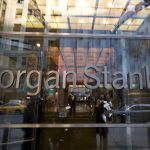 The euro dropped to one-week low against the British pound on Thursday, after the Bank of England announced yesterday that further gains cannot be ruled out as the UK economy expands amid declining jobless rate.
The euro dropped to one-week low against the British pound on Thursday, after the Bank of England announced yesterday that further gains cannot be ruled out as the UK economy expands amid declining jobless rate.
EUR/GBP touched a session low at 0.8340 at 09:27 GMT, after which consolidation followed at 0.8346, losing 0.22% for the day. Support was likely to be received at March 14th low, 0.8336, while resistance was to be met at March 19th high, 0.8395. On March 18, the pair hit 0.8400, the strongest since December 18.
Pounds demand continued to be supported after the UK government revised up its growth forecasts during yesterdays budget presentation.
The sterling has gained 10% in the past 12 months, the most among 10 developed-nation currencies tracked by Bloomberg Correlation-Weighted Indexes, amid signs accelerating growth will force the Bank of England to increase interest rates sooner-than-expected.
Yesterday the UK Office for Budget Responsibility said that it sees the economy expanding 2.7% this year, up from 2.4% forecast in December. It also reported gross domestic product will rise 2.3% next year and 2.6% in 2016 and 2017.
“It’s our base-case scenario that the pound goes higher,” said Steven Saywell, global head of foreign-exchange strategy at BNP Paribas SA in London, cited by Bloomberg. “Expectations are for sterling to rise again if the data continues to come out stronger.”
A report by the Office for National Statistics yesterday, showed the UK unemployment rate, measured by International Labour Organization methods, was 7.2% in the three months through January, the same as in the final quarter of 2013 and in line with analysts’ expectations.
The claimant count rate also diminished to 3.5% last month in line with expectations from 3.6% in January.
A rapid drop in the jobless rate last year forced the Bank of England to broaden its focus from the 7% threshold for considering a rate increase. In its February quarterly inflation report, the central bank revised its forward guidance, replacing the 7% unemployment threshold with a range of economic indicators, including a range of measures of spare capacity.
Meanwhile, in the 18-nation common currency bloc, the labor cost index was reported yesterday to have increased 1.4% during the final quarter of 2013, compared to the same period a year ago.
In addition, output in region’s construction sector expanded 8.8% in January 2014 compared to January 2013. In monthly terms, output rose 1.5% during the first month of the year.





